Introduction
Imagine stepping into your garden after a long day, greeted by the soft sound of water trickling from a beautiful fountain. If you’ve ever wondered how to turn your outdoor space into a serene oasis, you’re in the right place! Garden water features are more than just fancy decor—they offer a delightful blend of relaxation, beauty, and even a bit of wildlife drama. Picture this: a charming pond filled with shimmering fish, or a whimsical birdbath that attracts colorful visitors. It’s like hosting a lively party for nature!
But what exactly are the essentials for creating the perfect garden water features? Are you ready to dive into the world of flowing water and tranquil sounds? Whether you’re an avid gardener or just starting out, this guide will help you navigate the many options available to create your very own blissful retreat. From fountains that dance with the wind to ponds that reflect the sky, each feature tells a story and adds its own unique charm.
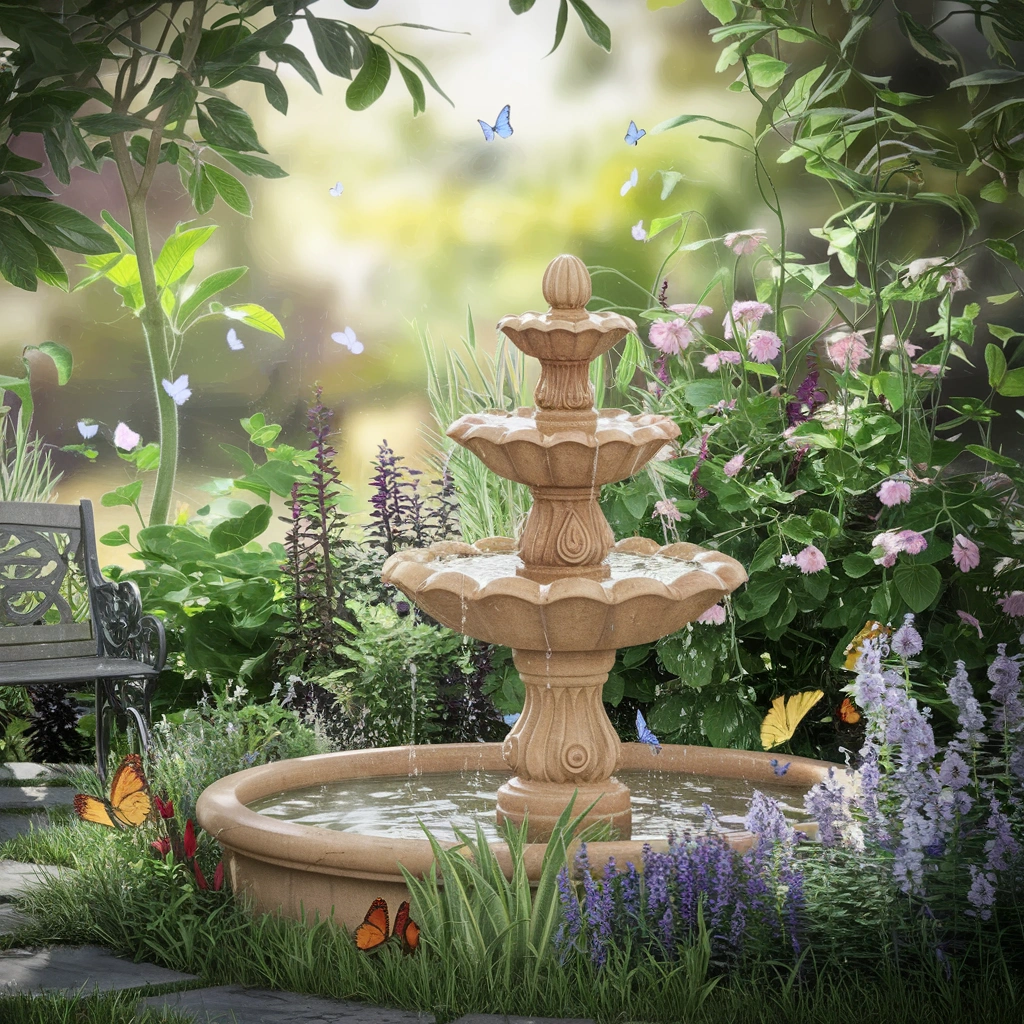
So grab a cup of tea (or something stronger, if you prefer), and let’s explore the essential garden water features that will make your garden not just a place to grow plants, but a sanctuary that brings peace and joy to your life!
Table of Contents
The Importance of Water Features in Gardens
When you think about transforming your garden into a serene retreat, one of the standout choices is undoubtedly garden water features. These delightful additions not only introduce a beautiful aesthetic but also create an atmosphere of tranquility. Trust me, as someone who’s spent many evenings unwinding next to a bubbling fountain, I can assure you that the right water feature can truly elevate your outdoor space.
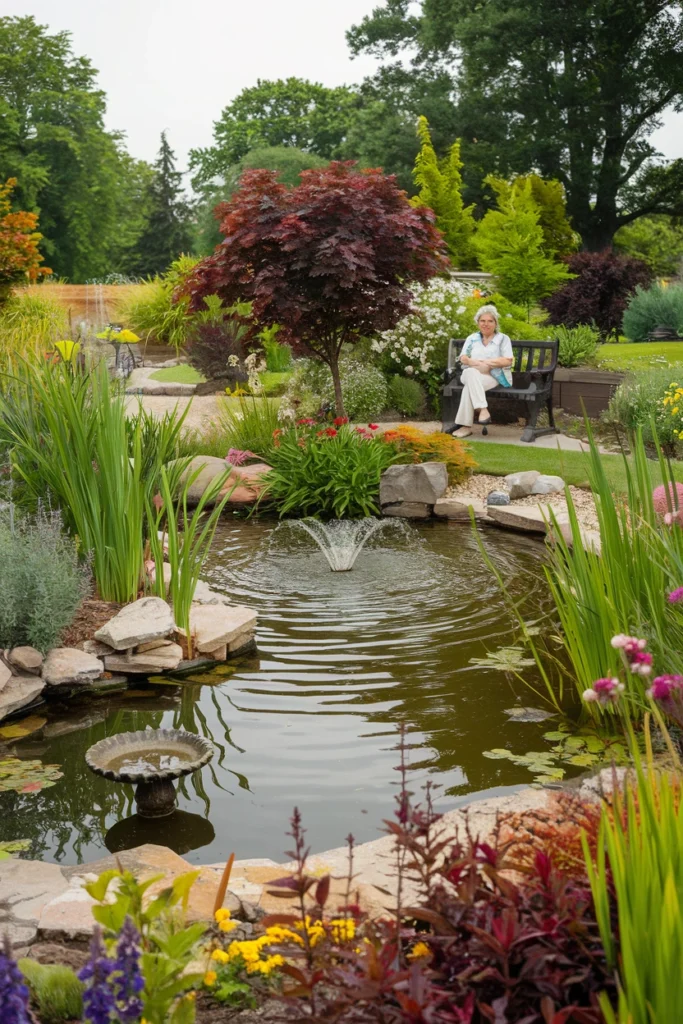
Psychological Benefits
Imagine stepping into your garden after a long day, greeted by the gentle sounds of water trickling from a charming fountain. Garden water features have been shown to reduce stress and promote relaxation. Studies suggest that the soothing sounds of water can lower blood pressure and enhance feelings of well-being. So, if you’re looking to create a peaceful haven, adding a water feature is an excellent choice.
If I had a pound for every time I felt my stress melt away while listening to the soft gurgle of a pond, I’d be well on my way to creating my dream garden!
Aesthetic Enhancements
Let’s not forget about the garden water features’ ability to enhance the overall beauty of your yard. They serve as stunning focal points, drawing the eye and adding layers of interest. Whether you prefer a classic stone fountain or a modern minimalist pond, the variety of options available means you can find something that perfectly complements your style.
- Fountains can be grand and elaborate, or simple and sleek.
- Ponds can host vibrant fish or be lined with colorful aquatic plants.
- Streams can wind through your landscape, creating a natural and inviting feel.
By incorporating garden water features, you’ll create a visual narrative that invites exploration and admiration.
Attracting Wildlife
One of the unexpected joys of garden water features is the wildlife they attract. Picture this: you’re sipping your morning coffee while watching birds flutter around a birdbath or butterflies dance near a pond. Adding water features encourages local fauna to visit, making your garden a lively ecosystem.
Here are a few tips to help you create a wildlife-friendly environment:
- Install a pond with shallow areas for birds to bathe.
- Add native plants around your water feature to attract pollinators.
- Consider a small waterfall to create a variety of habitats for creatures like frogs and dragonflies.
Witnessing nature up close can truly make your garden feel like a sanctuary.
Microclimate Creation
Did you know that garden water features can influence the microclimate of your garden? They act as natural humidifiers, moderating temperatures and creating a refreshing environment. This is particularly beneficial during hot summer months when the water can help cool the surrounding air.
- Ponds and fountains can lower temperatures by several degrees—perfect for those seeking relief from the summer heat!
- The added humidity is also great for plants, allowing them to thrive in a balanced environment.
Just imagine enjoying a serene afternoon by your pond, feeling cool and refreshed as a gentle breeze carries the scent of blooming flowers.
Environmental Impact
Lastly, garden water features can play a role in sustainable gardening. Implementing features like rain gardens or small ponds allows you to collect and manage rainwater, reducing runoff and promoting groundwater recharge.
- Rainwater harvesting systems can be integrated into your water feature design, making your garden more eco-friendly.
- Using natural materials and native plants further enhances sustainability, creating a landscape that works in harmony with the environment.
By choosing to incorporate garden water features, you’re not just beautifying your space; you’re also making a positive impact on the planet.
Types of Garden Water Features
When you’re ready to transform your outdoor space, understanding the various types of garden water features is key. Each type offers its unique charm and benefits, so let’s dive into the wonderful world of water elements that can turn your garden into a peaceful oasis.
Fountains
Fountains are perhaps the most iconic of all garden water features. They come in all shapes and sizes, from grand, classical designs to sleek, modern structures.
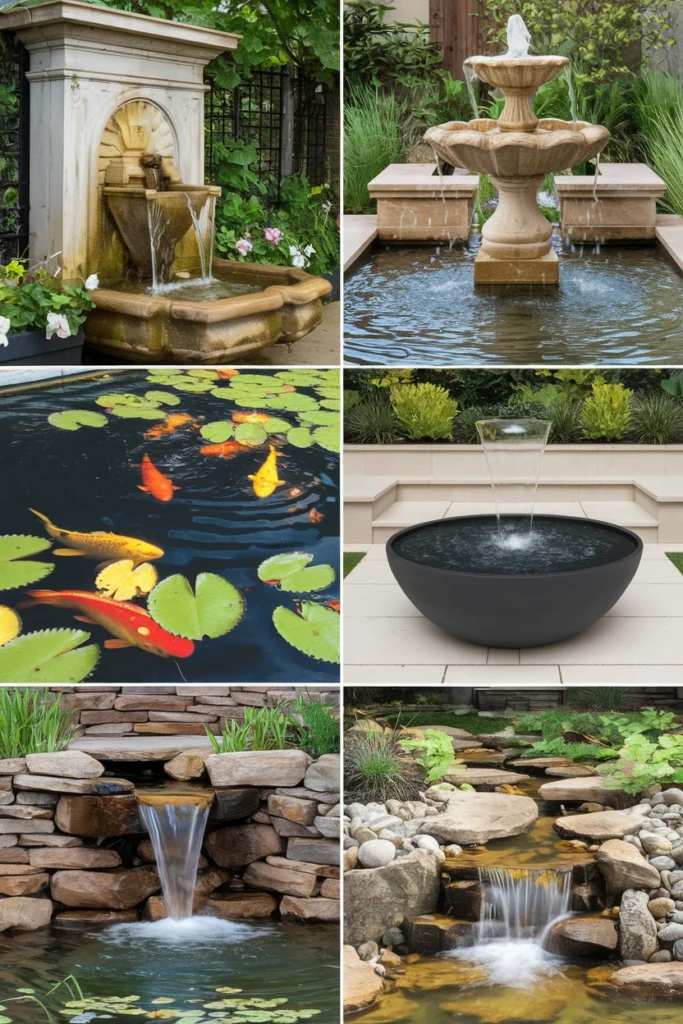
- Classic vs. Contemporary Fountain Designs: Whether you fancy a traditional stone fountain or a minimalist metal piece, the choice is yours! Classic designs often feature intricate carvings, while contemporary options focus on simple lines and materials.
- Solar-Powered Fountains: For those eco-conscious readers out there, consider a solar-powered fountain. Not only do they save on energy costs, but they also add a sustainable touch to your garden. Learn more about installing a solar-powered water feature.
- DIY Fountain Ideas: If you’re feeling creative, why not try making your own fountain? A simple pot or a repurposed item can easily be transformed into a charming water feature.
- Maintenance Tips for Fountains: Keeping your fountain clean and in good working order is essential. Regularly check for debris, and don’t forget to keep the water level topped up!
- Cost Considerations for Installation: The cost of fountains can vary widely. When budgeting, remember to consider installation costs, ongoing maintenance, and the electrical setup if you’re choosing a powered option.
Ponds
Next up are ponds, which can truly transform your garden into a thriving ecosystem.
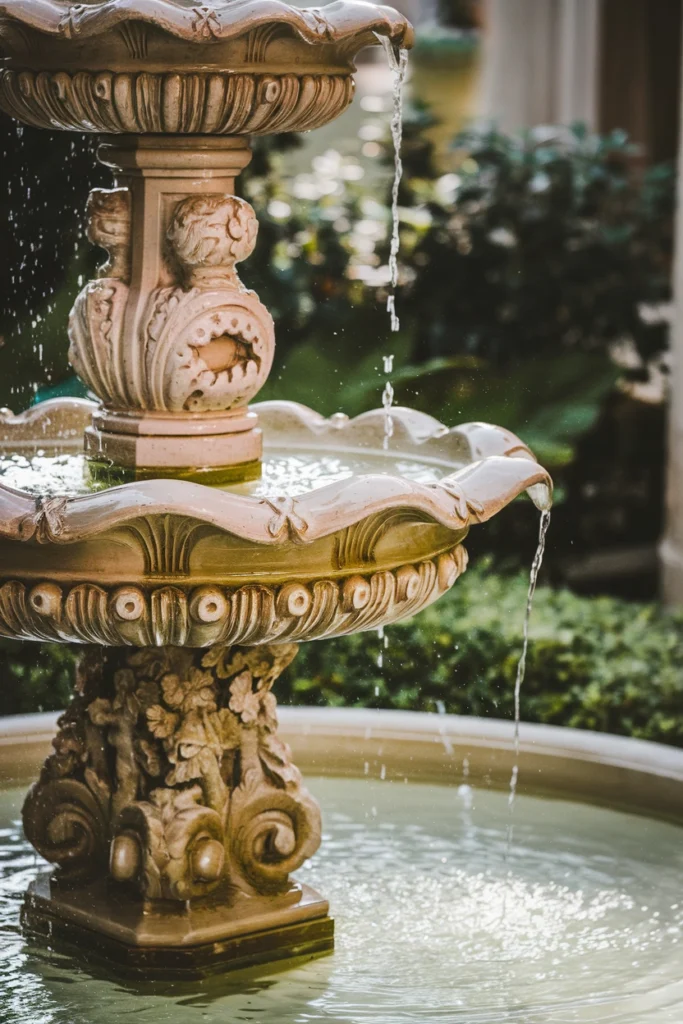
- Fish Ponds vs. Koi Ponds: If you love fish, you might wonder whether to create a fish pond or a more specialized koi pond. Koi ponds require more care, but they can be incredibly rewarding with their stunning colors and personalities.
- Natural vs. Man-Made Ponds: You can either dig a pond yourself or purchase a preformed one. Natural ponds tend to blend seamlessly into garden landscapes, while man-made ponds often allow for more customization.
- Plant Life Around Ponds: Surrounding your pond with lush plants not only enhances beauty but also creates a natural habitat for wildlife. Consider adding water lilies or reeds for both aesthetic and ecological benefits.
- DIY Pond Installation Guide: Building your own pond can be a fulfilling project. Just ensure you research the best materials and techniques to create a safe environment for aquatic life. Check out our guide on how to build a water feature for beginners.
- Pond Maintenance Essentials: Regular maintenance is crucial for the health of your pond. This includes checking water quality, managing algae, and ensuring that fish and plants are thriving.
Waterfalls
Waterfalls are another stunning addition to garden water features that bring a sense of tranquility and drama to your outdoor space.
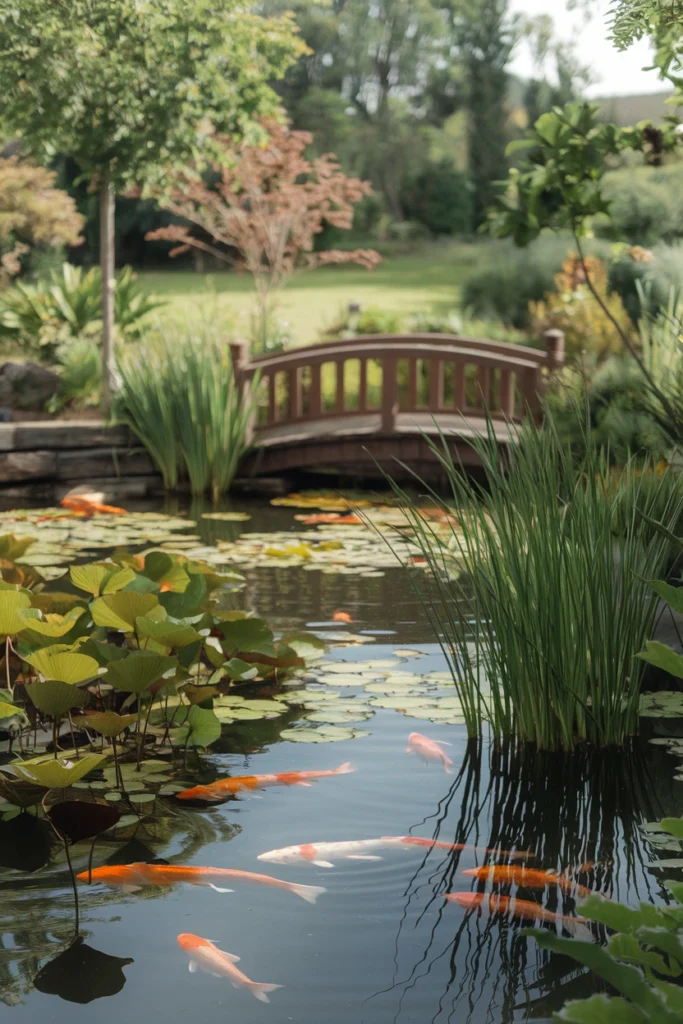
- Types of Waterfall Designs: Waterfalls can be integrated with ponds or stand-alone features. You could opt for a soft, gentle cascade or a dramatic, rushing flow, depending on your style.
- Integrating Waterfalls with Ponds: A waterfall can connect to a pond, creating a natural flow of water that’s both beautiful and beneficial for fish and plants.
- Soundscapes and Their Benefits: The sound of flowing water can drown out unwanted noise, making your garden a peaceful retreat. It also adds an auditory dimension that enhances relaxation.
- Materials Used for Waterfalls: Common materials for waterfalls include stones, concrete, and even glass. Choose materials that complement your garden’s aesthetic and are durable for the outdoors.
- Troubleshooting Common Issues: If your waterfall isn’t working as intended, it might be time to check for clogs, leaks, or pump issues. Regular checks can ensure your feature always looks its best.
Birdbaths and Water Bowls
Don’t underestimate the charm of simple birdbaths and water bowls! These garden water features are perfect for attracting wildlife right into your backyard.

- Styles and Materials for Birdbaths: Birdbaths come in all styles—from rustic stone to elegant ceramic. Choose one that reflects your garden’s overall theme.
- Creating a Bird-Friendly Environment: Position your birdbath in a quiet area with some nearby plants or trees for shelter. This will make it a safe spot for visiting birds.
- Placement Tips for Maximum Effect: Ideally, place your birdbath where you can enjoy the view. Early mornings with birds flitting about can be delightful!
- Seasonal Maintenance Tips: Keep your birdbath clean by changing the water regularly and scrubbing it to prevent algae buildup. In winter, consider using a heater to keep the water from freezing.
- Enhancing Wildlife Viewing Opportunities: By adding plants and other features around your birdbath, you can create an inviting atmosphere for birds, making your garden a lively spot to watch wildlife.
Stream and Rill Features
Last but not least, let’s discuss stream and rill features. These garden water features can lend a natural, flowing elegance to your outdoor space.
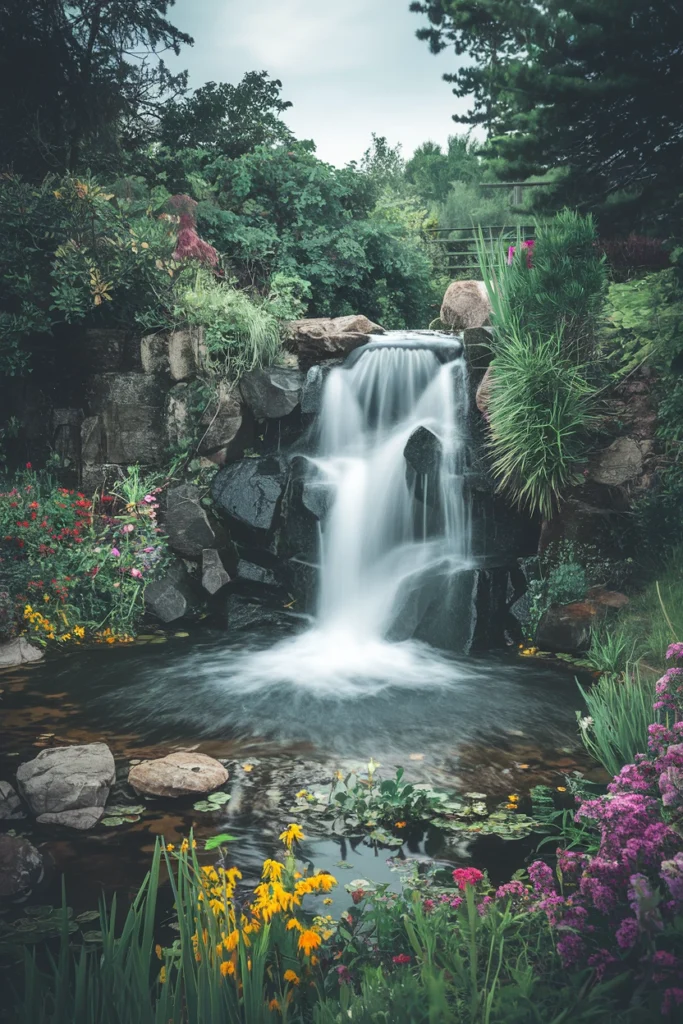
- Design Tips for Creating a Natural Stream: When designing your stream, think about how it would flow in nature. Use rocks and plants to create natural-looking banks.
- Benefits of Incorporating Rills in Gardens: Rills can guide water through your garden, adding movement and visual interest. They can also help with drainage.
- Plants Ideal for Streamside Gardens: Incorporate moisture-loving plants like ferns or irises along your stream to enhance the natural feel and provide habitat for wildlife.
- Water Flow Management Techniques: Ensure your stream has a gentle slope to keep the water flowing evenly. Use rocks strategically to control speed and create pools.
- Seasonal Adjustments and Maintenance: Keep your stream clean and clear of debris to ensure smooth water flow. Regular checks after storms are also a good idea.
Designing the Perfect Water Feature
Creating a stunning garden water feature isn’t just about picking out a fountain or pond; it’s about thoughtful design that enhances your overall garden experience. Let’s explore some essential aspects of design, ensuring your water feature becomes a true focal point in your outdoor space.
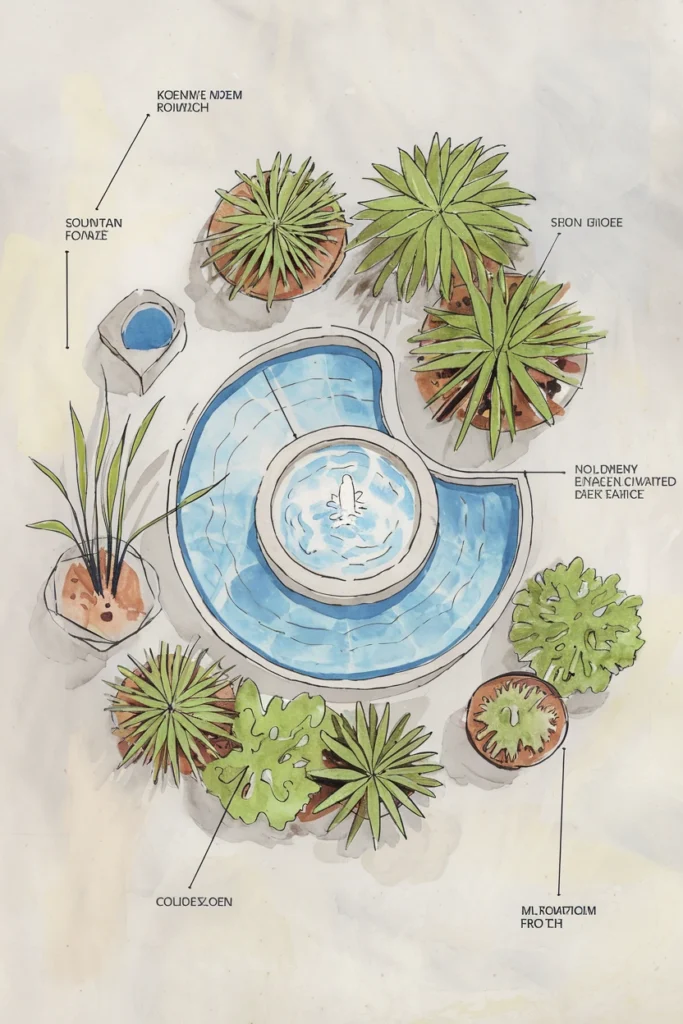
Size and Scale
One of the first things to consider when adding a garden water feature is its size and scale relative to your garden space. You wouldn’t want a gigantic fountain dwarfing your cozy backyard, nor would a tiny birdbath get lost in a sprawling estate.
- Assessing Your Garden Space: Take a good look at your garden. Is it large and open, or more compact and intimate? A massive waterfall might be stunning in a large garden but could overwhelm a smaller space.
- Proportional Design Principles: Aim for balance. If you have a tall tree, a shorter fountain might work better to keep the visual lines harmonious.
- Using Water Features to Define Areas: You can use a garden water feature to create distinct zones in your garden. For example, a small pond surrounded by benches can serve as a peaceful reading nook.
- Balancing Features with Other Garden Elements: Ensure that your water feature complements existing plants, pathways, and seating areas. Your feature should feel like a natural part of the landscape.
- Incorporating Seating Arrangements: Don’t forget to include seating nearby! Imagine sitting by your pond, listening to the soft sounds of water as you sip your tea. It turns your garden into an inviting outdoor living space.
Style Compatibility
Next up, let’s talk about style. Your garden water feature should align with the overall aesthetic of your garden.
- Matching Features to Garden Themes: Are you going for a rustic look with wildflowers and natural materials? A natural stone fountain might be just the ticket. For a modern garden, consider sleek metal designs.
- Traditional vs. Modern Aesthetics: Mixing styles can be fun, but you don’t want your water feature to clash with its surroundings. Think about how each element plays together visually.
- Using Materials to Enhance Style: The materials used in your water feature can either stand out or blend in. Wood, stone, metal, and glass all convey different styles—choose what fits best.
- Examples of Well-Designed Water Features: Look around for inspiration! Many gardens combine various garden water features beautifully. Consider visiting local botanical gardens to see what resonates with you.
- Personalizing Your Water Feature: Add personal touches that reflect your style. You could include mosaics, sculptures, or even plant your favorite flowers nearby.
Sound and Movement
Don’t underestimate the power of sound when it comes to a garden water feature. The gentle trickle of water can create a peaceful ambiance, while a more vigorous flow can energize your space.
- The Role of Sound in Relaxation: Water sounds can be incredibly calming. Think about where you’d like to position your feature to maximize this effect—maybe near a spot where you relax.
- How to Control Water Flow for Desired Sounds: Depending on your setup, you can adjust the flow of water. A gentle stream creates a soothing backdrop, while a splashing waterfall adds vibrancy.
- Movement Techniques for Dynamic Features: Consider incorporating features that allow for some movement. Floating plants or fish in a pond can enhance visual interest.
- Creating Peaceful Spaces at Home: If you’re creating a space to unwind after a long day, think about where you can best capture those soothing water sounds.
- Enhancing the Nighttime Experience: Don’t forget about lighting! Soft lights can highlight your garden water feature at night, turning it into a magical focal point.
Plant Integration
The best garden water features don’t exist in a vacuum. Properly integrating plants can help them feel more natural and enhance the overall aesthetic.
- Choosing Aquatic Plants for Your Feature: Consider adding water lilies, lotuses, or even some floating ferns to your pond. These plants not only look lovely but also provide shelter for wildlife.
- Workshop: Companion Planting Around Water Features: Think about what plants thrive near water. Many bog plants can thrive in the wet soil surrounding your fountain or pond.
- Attracting Pollinators with Plant Choices: Surrounding your water feature with colorful blooms will attract bees and butterflies, making your garden not only picturesque but also lively.
- Seasonal Planting Strategies: Change your plant selections with the seasons for year-round interest. In the spring, opt for blooming flowers, while summer might call for greens and aquatic plants.
- Creating a Balanced Ecosystem: Aim for balance. A good mix of plant types will create a more sustainable environment, attracting different forms of life to your garden.
Sustainability and Maintenance
Finally, let’s talk about sustainability. Choosing eco-friendly garden water features not only helps the environment but also reduces long-term maintenance.
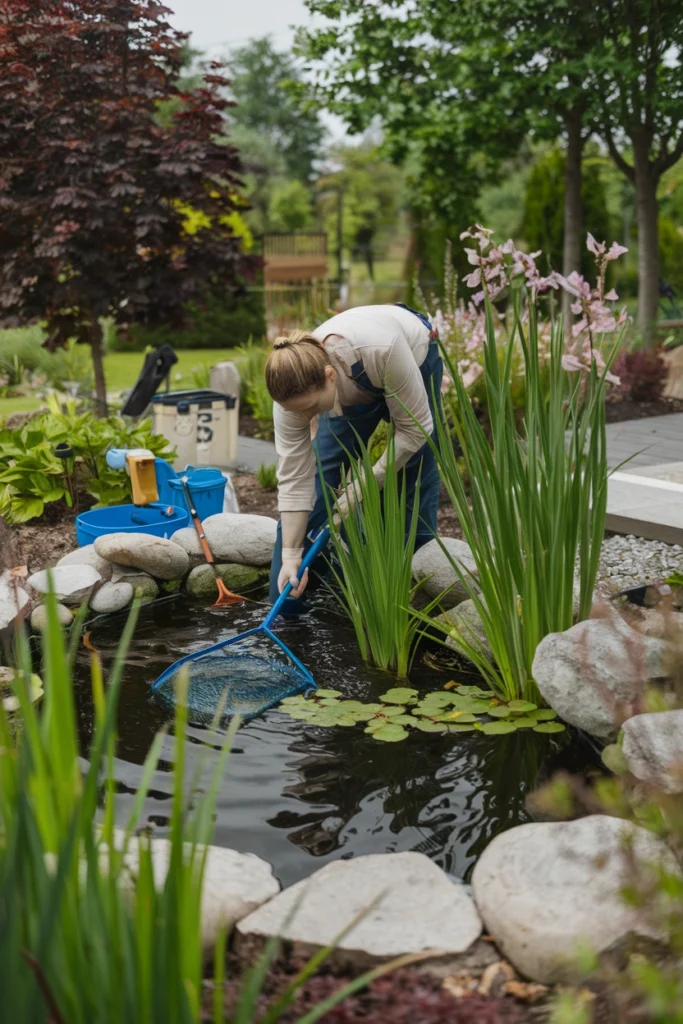
- Eco-Friendly Water Feature Options: Look for features that utilize rainwater, such as a rain garden or water barrel system connected to your pond.
- Building a Water-Saving Feature: A recirculating fountain is a great option. It uses the same water, reducing waste and keeping your garden sustainable.
- Regular Maintenance Routines: Just like every other part of your garden, your garden water feature needs care. Regular cleaning keeps the water clear and algae-free.
- Troubleshooting Common Issues: Be mindful of common problems, like pump failure or leaks. Address these issues quickly to prevent larger problems down the line.
- Seasonal Preparation and Closing Tips: Prepare your water feature for winter by cleaning it out and possibly covering it. This will ensure it remains durable and retains its beauty!
Conclusion
As we wrap up this exploration of garden water features, it’s clear these elements can truly transform your outdoor space. Whether you opt for a soothing pond, a bubbling fountain, or a simple birdbath, remember that each feature has the potential to turn your garden into a relaxing haven. Have you imagined how your garden might look with a shimmering water feature? The possibilities are endless!
Creating your personal paradise starts with choosing the right garden water features for your style and space. So, what are you waiting for? Tackle that project you’ve been dreaming about and watch as your vision comes to life. Soon, you’ll have a beautiful space to unwind, reflect, and enjoy the sounds of nature.
With all the tips we’ve covered, you’re now equipped to make informed decisions about adding water features to your garden. So go ahead, take the plunge, and enjoy the benefits of a tranquil garden that invites relaxation and joy into your everyday life. Happy gardening!
FAQ
Q: What are the best types of garden water features for small spaces?
A: For smaller gardens, consider compact options like wall fountains, birdbaths, or small ponds. These features can add charm without overwhelming your space.
Q: How do I maintain my water feature?
A: Regular maintenance includes checking water levels, cleaning debris, and ensuring pumps and filters are functioning properly. Seasonal care, like winterizing ponds, is also important.
Q: Can garden water features attract wildlife?
A: Absolutely! Features like ponds and birdbaths can attract a variety of birds, butterflies, and beneficial insects, turning your garden into a lively habitat.
Q: Are solar-powered water features a good option?
A: Yes! Solar-powered garden water features are eco-friendly and can save on energy costs while adding a delightful touch to your garden.
Q: Do garden water features require a lot of installation work?
A: The level of installation work depends on the type of feature. Simple birdbaths require minimal setup, while ponds or large fountains may need more planning and labor.
